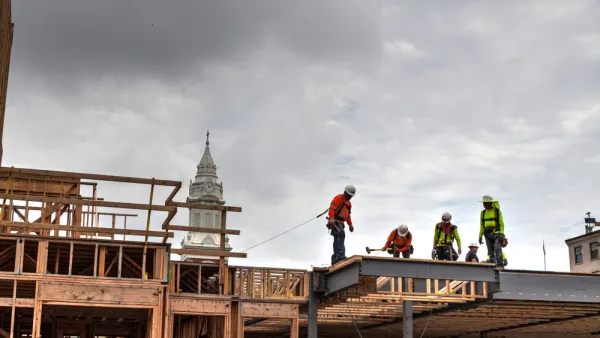Mixed-income housing - infusing affordable housing with market-rate units - is relying more on incentives and subsidies, than mandates, to stimulate development.
Thankfully, dwindling are the days of segregating low-income residents into affordable housing-only enclaves. Today, the need for affordable housing remains, yet an emerging trend is to utilize public incentives to co-mingle income groups in mixed-housing developments.
"The concept is finding favor among for-profit and nonprofit developers alike, particularly in today's tight lending market," states Patricia Kirk of Urban Land Magazine, "because local governments offer a number of incentives, including low-interest financing tools, cash subsidies and grants, free or low-cost land, density bonuses, tax abatement programs, rehabilitation assistance, fast-tracking of plan reviews and permits, and reduced or waived fees." It is these incentives that are driving private developers to include affordable housing in their developments, sometimes mixing affordable units with multi-million dollar ones.
While city planners and some developers state that it's simply "the right thing to do," many cities have been banned from mandating the inclusion of affordable housing into development plans by state statutes. In turn, cities are now looking at the use of incentives to coax developers into voluntarily setting aside up to 20 percent of their units as affordable housing.
For example, "Austin's S.M.A.R.T. (Safe, Mixed-income, Accessible, Reasonably priced, Transit-oriented) Housing Program offers developers a schedule of incentives based on the level of affordable housing provided. The city provides additional density and height variance, or floor/area ratio, to encourage provision of affordable housing and other community benefits, such as parking, open space, and streetscapes." Other cities like Los Angeles, New York and Portland have used similar incentive strategies to construct new transit-oriented developments, senior housing, art colonies and help revitalize economically and environmentally distressed neighborhoods.
FULL STORY: Making Mixed-Income Housing Work

National Parks Layoffs Will Cause Communities to Lose Billions
Thousands of essential park workers were laid off this week, just before the busy spring break season.

Retro-silient?: America’s First “Eco-burb,” The Woodlands Turns 50
A master-planned community north of Houston offers lessons on green infrastructure and resilient design, but falls short of its founder’s lofty affordability and walkability goals.

Delivering for America Plan Will Downgrade Mail Service in at Least 49.5 Percent of Zip Codes
Republican and Democrat lawmakers criticize the plan for its disproportionate negative impact on rural communities.

Test News Post 1
This is a summary

Test News Headline 46
Test for the image on the front page.

Balancing Bombs and Butterflies: How the National Guard Protects a Rare Species
The National Guard at Fort Indiantown Gap uses GIS technology and land management strategies to balance military training with conservation efforts, ensuring the survival of the rare eastern regal fritillary butterfly.
Urban Design for Planners 1: Software Tools
This six-course series explores essential urban design concepts using open source software and equips planners with the tools they need to participate fully in the urban design process.
Planning for Universal Design
Learn the tools for implementing Universal Design in planning regulations.
EMC Planning Group, Inc.
Planetizen
Planetizen
Mpact (formerly Rail~Volution)
Great Falls Development Authority, Inc.
HUDs Office of Policy Development and Research
NYU Wagner Graduate School of Public Service





























